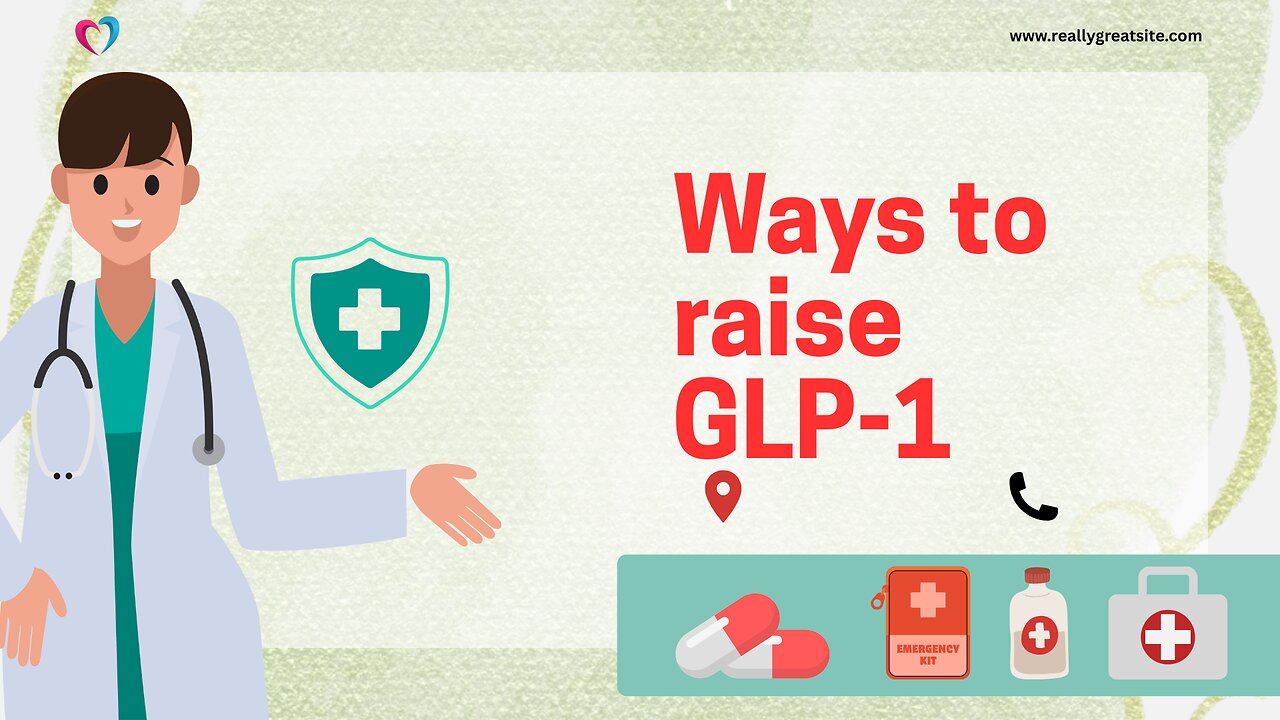Premium Only Content

ways to increase glp-1
GLP-1 (Glucagon-Like Peptide-1) is a powerful hormone that plays a key role in blood sugar regulation, appetite control, and weight management. GLP-1 receptor agonists, often used as medications for type 2 diabetes and obesity treatment, work by stimulating insulin secretion, reducing glucagon release, and slowing gastric emptying. This leads to improved insulin sensitivity, better glycemic control, and natural weight loss support.
Many people explore GLP-1 medications such as semaglutide, liraglutide, and exenatide for their effectiveness in lowering A1C, promoting fat loss, and supporting long-term metabolic health. Beyond diabetes, GLP-1 research suggests potential benefits for cardiovascular health, fatty liver disease, and inflammation reduction.
If you’re considering GLP-1 therapy, it’s important to understand benefits, side effects, and alternatives like diet, exercise, and supplements. Pairing low-glycemic carbs, high-protein meals, and anti-inflammatory foods with GLP-1 therapy can enhance results.
---
Internal SEO Links (example for your site):
Causes of Insulin Resistance
Weight Loss Supplements
Thyroid Problems and Metabolism
Leptin Resistance Explained
Cancer Prevention and Diet
---
External SEO Links:
American Diabetes Association – GLP-1 Receptor Agonists
NIH – Role of GLP-1 in Metabolic Health
CDC – Type 2 Diabetes Treatment Options
---
LSI Keywords for GLP-1:
GLP-1 receptor agonist
GLP-1 hormone function
GLP-1 weight loss
GLP-1 diabetes medication
Semaglutide benefits
Liraglutide for obesity
GLP-1 insulin secretion
GLP-1 and appetite regulation
GLP-1 side effects
Natural GLP-1 boosters
-
 3:42:12
3:42:12
Turning Point USA
11 hours agoLIVE NOW - AMFEST IS BACK - ERIKA KIRK, MICHAEL KNOWLES, TUCKER CARLSON, BEN SHAPIRO & RUSSELL BRAND
492K188 -
 2:39:04
2:39:04
TimcastIRL
6 hours agoMarijuana LEGALIZATION IS COMING, Trump Orders Weed To Schedule 3 In HUGE Move | Timcast IRL
101K78 -
 2:02:44
2:02:44
megimu32
6 hours agoON THE SUBJECT: CHRISTMAS CORE MEMORIES
31K6 -
 2:16:09
2:16:09
DLDAfterDark
4 hours ago $3.15 earnedThe Very Merry HotDog Waffle Christmas Stream! Gun Talk - God, Guns, and Gear
26K7 -
 1:19:51
1:19:51
Tundra Tactical
15 hours ago $11.26 earnedThursday Night Gun Fun!!! The Worlds Okayest Gun Show
45.9K -
 55:11
55:11
Sarah Westall
1 day agoHumanity Unchained: The Awakening of the Divine Feminine & Masculine w/ Dr. Brianna Ladapo
37.9K6 -
 1:42:41
1:42:41
Glenn Greenwald
10 hours agoReaction to Trump's Primetime Speech; Coldplay "Adultery" Couple Reappears for More Shame; Australia and the UK Obey Israel's Censorship Demands | SYSTEM UPDATE #560
139K86 -
 2:46:41
2:46:41
Barry Cunningham
8 hours agoBREAKING NEWS: President Trump Signs The National Defense Authorization Act | More News!
55.3K30 -
 43:10
43:10
Donald Trump Jr.
9 hours agoThe Days of Destructive DEI are Over, Plus Full News Coverage! | TRIGGERED Ep.301
118K89 -
 52:07
52:07
BonginoReport
9 hours agoThe Internet Picks Bongino’s FBI Replacement - Nightly Scroll w/ Hayley Caronia (Ep.200)
111K78